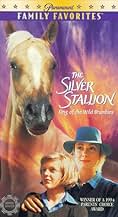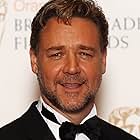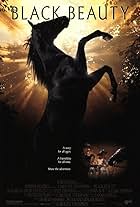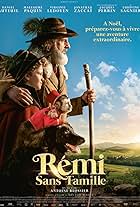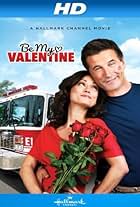IMDb RATING
5.8/10
1.3K
YOUR RATING
A mother tells her daughter a fable about the prince of the brumbies, brumby being a term for the feral horses of Australia, who must find its place among its kind, while one man makes it hi... Read allA mother tells her daughter a fable about the prince of the brumbies, brumby being a term for the feral horses of Australia, who must find its place among its kind, while one man makes it his mission to capture it and tame it.A mother tells her daughter a fable about the prince of the brumbies, brumby being a term for the feral horses of Australia, who must find its place among its kind, while one man makes it his mission to capture it and tame it.
- Awards
- 3 wins & 2 nominations total
Amiel Daemion
- Indi Mitchell
- (as Ami Daemion)
Charles A. Harris
- Ride
- (as Charles Harris)
- Director
- Writers
- All cast & crew
- Production, box office & more at IMDbPro
Storyline
Did you know
- TriviaThe Brolga (grey stallion) was played by 3 separate horses including a registered Andalusian stallion named Blackford Santo Domingo.
- ConnectionsFeatured in The Silver Brumby: On Set with the Film Makers (1993)
- SoundtracksSon of the Wind
Music by Tassos Ioannides, lyrics by Tassos Ioannides and John Tatoulis
Performed by Tiddas
Featured review
Well, in my continuing quest to see every movie Russell Crowe was ever in, I stumbled across this little film. (As long as I'm disclosing biases, I might as well mention that I have not read Elyne Mitchell's novel.)
It is a film for children--specifically, girls ages 8-12 or so who love horses. And they will love it. Younger children may be disturbed by some of the content; these are wild horses trying to survive in the wild, in all weather and situations.
It's framed as a fable, with Elyne Mitchell (Caroline Goodall) writing a story for her daughter Indi (Amiel Daemion) about Thowra, the great silver brumby, and the Man (Russell Crowe) who wants to tame him.
It's meant to be a fable, which explains how all these wild horses are so beautifully groomed. The horses also occasionally seem to be deaf, since they fail to react at all to sounds that any horse would prick its ears at.
As a horse film, it's highly successful. We see lots of lovely horses, doing fascinating horse things. The horse part of the movie is perfectly developed.
The humans are more troublesome. I suspect that Mrs. Mitchell and her daughter were not characters in the book; adding them causes a fundamental shift in the relationships between the characters. Instead of relationships between Thowra and other horses (especially the Brolga, his archrival) and between Thowra and the Man, the most important relationships are those between humans (between the two Mitchells, between Indi and the various men who catch and tame brumbies) and between humans and nature, with the relationships among the horses and of the humans to the horses receding into the background.
Instead of a simple pair of conflicts--between Thowra and the Brolga (the natural challenge); between Thowra and the Man (the unnatural challenge)--we get instead a large number of relationships, which changes the entire dynamic.
Despite these problems, the new concept could have worked, if simplified a bit. The basic point is that both Indi and the Man love Thowra, and for the same reasons: he is beautiful, strong, proud, and free. However, because Indi loves Thowra, she wants him to remain free; because the Man loves Thowra, he wants to own and tame the horse.
Such a conflict could have provided ample opportunity for lessons on "listening to the bush" and on the difference and inherent contradiction between love and possession (etc., etc.).
In the film, however, the Mitchells dominate. Elyne gives her daughter lessons on nature and life, with the help of an injured kangaroo they find, which serves to teach that wild things belong in the wild, that if you truly care about something you give it its freedom--all lessons that could have been communicated via the story of Thowra. (I loved the kangaroo, but it wasn't necessary.) Meanwhile, the Man is underdeveloped, and sometimes demonized--which runs entirely counter to the purpose of the film. The Man is not evil, just obsessed.
The filmmakers undoubtedly decided to focus on the girl and her mother because that's their audience. A reasonable decision, and yet one which weakens the film.
Overall, a nice, solid horse film which should be very popular with its target audience.
It is a film for children--specifically, girls ages 8-12 or so who love horses. And they will love it. Younger children may be disturbed by some of the content; these are wild horses trying to survive in the wild, in all weather and situations.
It's framed as a fable, with Elyne Mitchell (Caroline Goodall) writing a story for her daughter Indi (Amiel Daemion) about Thowra, the great silver brumby, and the Man (Russell Crowe) who wants to tame him.
It's meant to be a fable, which explains how all these wild horses are so beautifully groomed. The horses also occasionally seem to be deaf, since they fail to react at all to sounds that any horse would prick its ears at.
As a horse film, it's highly successful. We see lots of lovely horses, doing fascinating horse things. The horse part of the movie is perfectly developed.
The humans are more troublesome. I suspect that Mrs. Mitchell and her daughter were not characters in the book; adding them causes a fundamental shift in the relationships between the characters. Instead of relationships between Thowra and other horses (especially the Brolga, his archrival) and between Thowra and the Man, the most important relationships are those between humans (between the two Mitchells, between Indi and the various men who catch and tame brumbies) and between humans and nature, with the relationships among the horses and of the humans to the horses receding into the background.
Instead of a simple pair of conflicts--between Thowra and the Brolga (the natural challenge); between Thowra and the Man (the unnatural challenge)--we get instead a large number of relationships, which changes the entire dynamic.
Despite these problems, the new concept could have worked, if simplified a bit. The basic point is that both Indi and the Man love Thowra, and for the same reasons: he is beautiful, strong, proud, and free. However, because Indi loves Thowra, she wants him to remain free; because the Man loves Thowra, he wants to own and tame the horse.
Such a conflict could have provided ample opportunity for lessons on "listening to the bush" and on the difference and inherent contradiction between love and possession (etc., etc.).
In the film, however, the Mitchells dominate. Elyne gives her daughter lessons on nature and life, with the help of an injured kangaroo they find, which serves to teach that wild things belong in the wild, that if you truly care about something you give it its freedom--all lessons that could have been communicated via the story of Thowra. (I loved the kangaroo, but it wasn't necessary.) Meanwhile, the Man is underdeveloped, and sometimes demonized--which runs entirely counter to the purpose of the film. The Man is not evil, just obsessed.
The filmmakers undoubtedly decided to focus on the girl and her mother because that's their audience. A reasonable decision, and yet one which weakens the film.
Overall, a nice, solid horse film which should be very popular with its target audience.
- sign_of_the_angel
- Jun 13, 2000
- Permalink
- How long is The Silver Brumby?Powered by Alexa
Details
- Release date
- Country of origin
- Official site
- Language
- Also known as
- Silver Brumby
- Filming locations
- Production companies
- See more company credits at IMDbPro
- Runtime1 hour 33 minutes
- Color
- Sound mix
- Aspect ratio
- 1.85 : 1
Contribute to this page
Suggest an edit or add missing content


